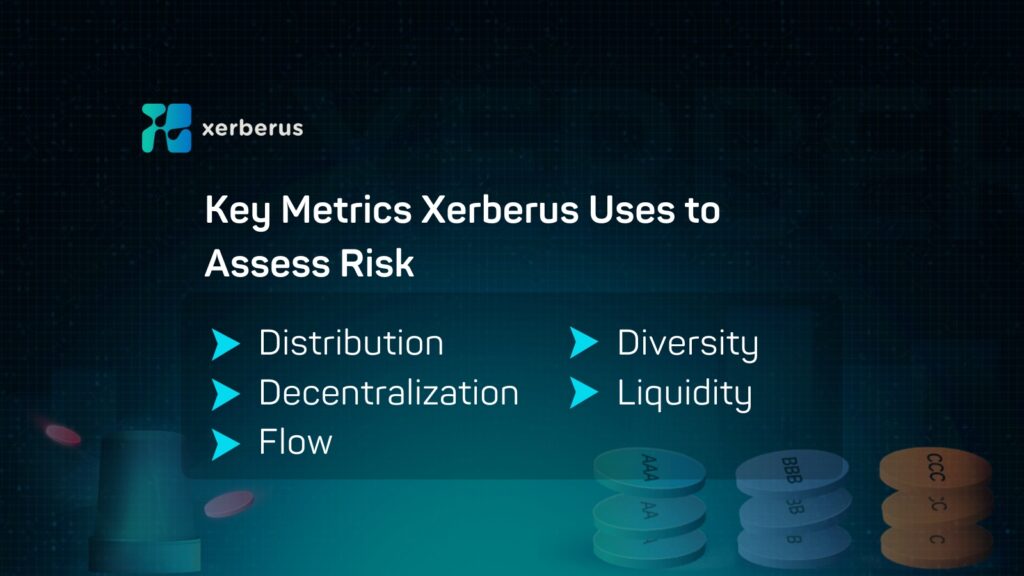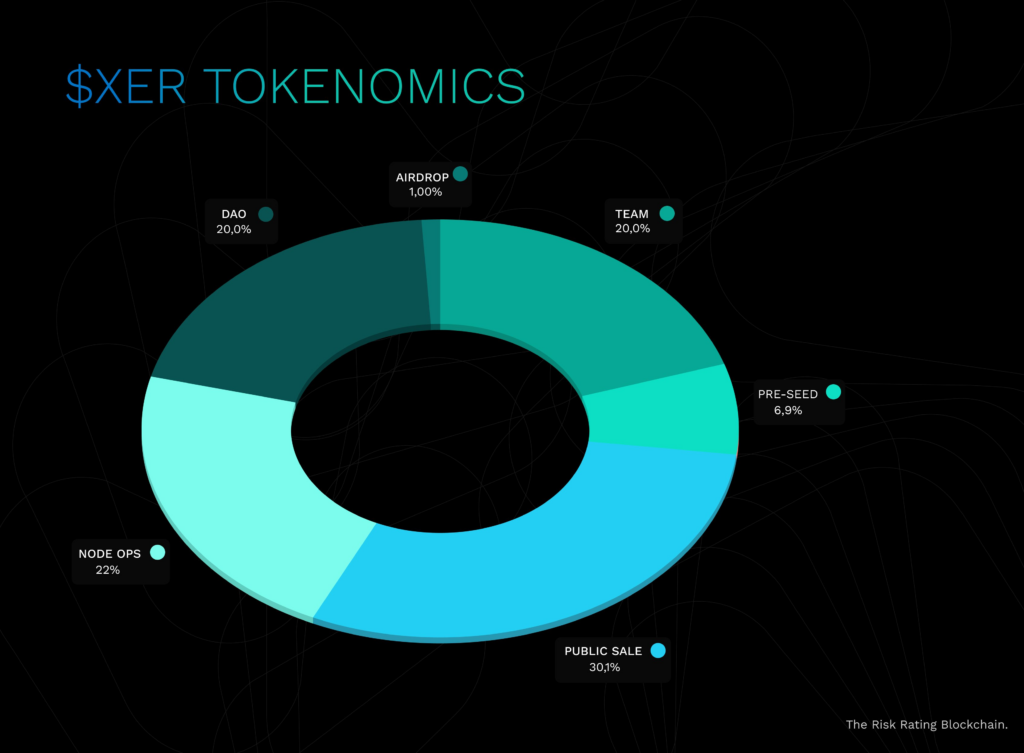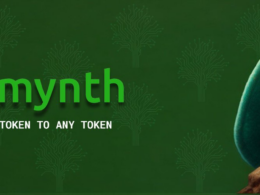Crypto has taken the world by storm, but it also comes with risks that traditional finance just doesn’t have. Stocks and bonds have decades of tools, rules, and data to help people measure risk. However, in the crypto space, those tools need a better way of analysis and more comprehensive risk ratings. Starting with why crypto risk is so different from what we see in regular finance, crypto tokens like Bitcoin, DeFi tokens, and even meme coins are hard to measure by traditional standards.
In crypto, people can own tokens without revealing their identity. That means it’s hard to know if just a few big players control a token. If these whales decide to sell, it could tank the price. In 2021, people lost over $7 billion to crypto scams. Tokens can be created in minutes, so there’s often no time to check if a project is legit.
Crypto is known for wild price swings. According to the IMF, crypto assets are five to seven times more volatile than the stock market. That’s a lot of uncertainty for investors to handle, and with little regulation, it’s easy for scams to slip through. In fact, 95% of some trading volumes are thought to be artificially inflated, making it tough for investors to know what’s real. This is why a dedicated system for assessing crypto risk is so important.
Key Takeaways
- Xerberus provides a transparent, blockchain based risk assessment system that helps investors better understand the risks of crypto assets, aiming to make DeFi a more secure environment.
- Using its unique Wallet Graph, Xerberus analyzes transaction patterns and wallet distributions to create accurate, and real time risk ratings.
- The $XER token enables community governance, allowing token holders to actively participate in protocol updates, delegate votes, and support critical research efforts to strengthen the network.
In DeFi, for instance, token value often depends on community support or network growth, not profits. So, trying to value a DeFi token based on profit doesn’t make sense. In some cases, no one actually knows who created a token or who holds large amounts. This makes it difficult to conduct background checks or verify token ownership.
Some traders artificially inflate token prices by creating hype, only to sell off their tokens at a high price. This hurts other investors and creates a lot of mistrust. Decentralized Finance (DeFi) has great potential, but in 2022 alone, over $3 billion was stolen from DeFi projects due to hacks and code issues. For a market that attracts new investors every day, these risks can be discouraging. People want to know they’re making safe investments, and that’s where risk ratings like those from Xerberus can help.
How Xerberus is Revolutionizing Risk Assessment in the Crypto Space

Xerberus is a risk rating protocol designed to give investors a clear, objective way to assess the risk of any crypto asset. Using only on chain data, Xerberus provides transparent, data driven metrics that can’t be influenced by fake profiles or misleading social media claims.
This approach means that every risk rating is based on real transaction records, which bad actors can’t hide. Xerberus Protocol introduces a fresh way to evaluate crypto assets. Instead of relying on traditional metrics, it creates a unique system designed specifically for crypto.

Xerberus doesn’t just rely on one method, it looks at several factors to understand the true risk of a token. Distribution is a way to look at how spread out the token ownership is, if a few wallets hold most of a token, it could be risky. A more decentralized asset, with many holders rather than a few, tends to be more stable.
The frequency of token transactions, higher transaction rates mean the token has genuine interest and activity. A mix of wallet sizes, behaviors, and goals helps prevent sudden price drops. More diverse holders make for a stronger token. Liquidity measures how easy it is to buy or sell a token without impacting its price. Higher liquidity means it’s easier to trade without sudden price jumps or drops.
The Wallet Graph
Xerberus uses something called the Wallet Graph to analyze token risk. The Wallet Graph gathers and examines all transactions for a specific token across the blockchain. By analyzing transactions, it can spot patterns, like whether a token is mostly owned by a few wallets or if it has active trading and usage.
It’s like a map that shows how tokens move around. This can show whether a token is genuinely popular or if a token is only held by a few big wallets, it might be riskier because these wallets could drop their shares all at once.
Decentralized Data Collection
One of the things that makes Xerberus unique is its decentralized approach. Xerberus doesn’t rely on one person or company to collect and analyze data. Instead, it uses nodes, which are essentially individual network participants. These nodes collect transaction data from multiple blockchains.
Because no one person or organization controls these nodes, and having it verified by independent nodes, Xerberus creates a trustworthy, decentralized risk rating system. After nodes analyze the data, they compare their findings with others. This cross checking helps ensure the data is accurate.
Oracle Integration for Real Time Risk Data
Xerberus also uses something called Oracle Light Nodes to share information across different blockchain networks. This feature is essential for keeping the risk ratings up to date in real time and ensures that DeFi platforms can access accurate risk data whenever they need it.
By sharing data continuously, Xerberus ensures that risk ratings are as current as possible. The Oracle system makes Xerberus’s risk data accessible across different blockchains, allowing platforms to integrate accurate ratings seamlessly.
On October 9th, an incident occurred where approximately 134,000 USDT disappeared from a victim’s account. Xerberus investigated the case and successfully analyzed how the hack took place. This proves their level of competence in protecting against and identifying bad actors
Keeping the Community in Control
Xerberus is built on an open governance model, which means the community helps shape its development. Holders of the Xerberus token, $XER, can vote on new proposals and changes to the protocol. Token holders can help approve changes to the protocol, ensuring that it adapts as the crypto space evolves. This system lets the community decide on protocol updates, making Xerberus more adaptive and fair.
What is the $XER Token?
$XER is a coordination coin for the Xerberus network. This means it helps organize and manage all the key activities that keep the protocol running. By holding and using $XER, participants in the Xerberus network can:
- Influence the network through governance votes
- Earn rewards by helping manage the network’s health and data accuracy
- Engage in the core tasks that keep Xerberus safe and reliable.
$XER Tokenomics

But here’s the thing, $XER holders don’t automatically get rewards just for holding the token. Instead, rewards are only given to holders who actively participate and successfully complete specific tasks. So, $XER is a token designed for action, encouraging holders to stay involved and engaged.
$XER Initial DEX Offering (IDO)

Mark your calendars, the official launch of $XER on MintswapDEX, the token powering Xerberus Protocol, is set for November 11th. This launch will be conducted through an IDO, offering early access to $XER for those ready to support and participate in the Xerberus ecosystem from day one. Get ready to join the movement toward a safer, more transparent DeFi space with $XER.










